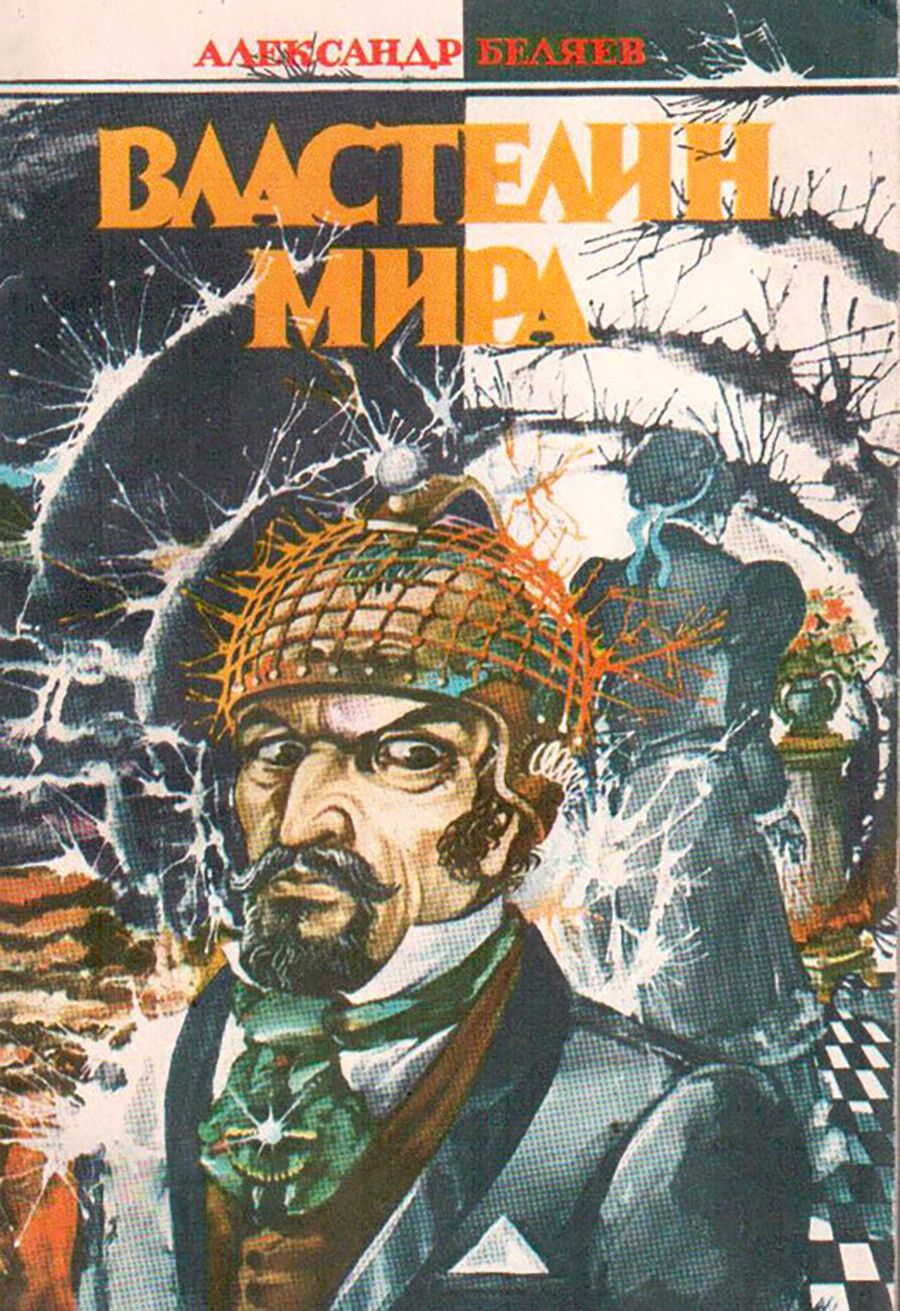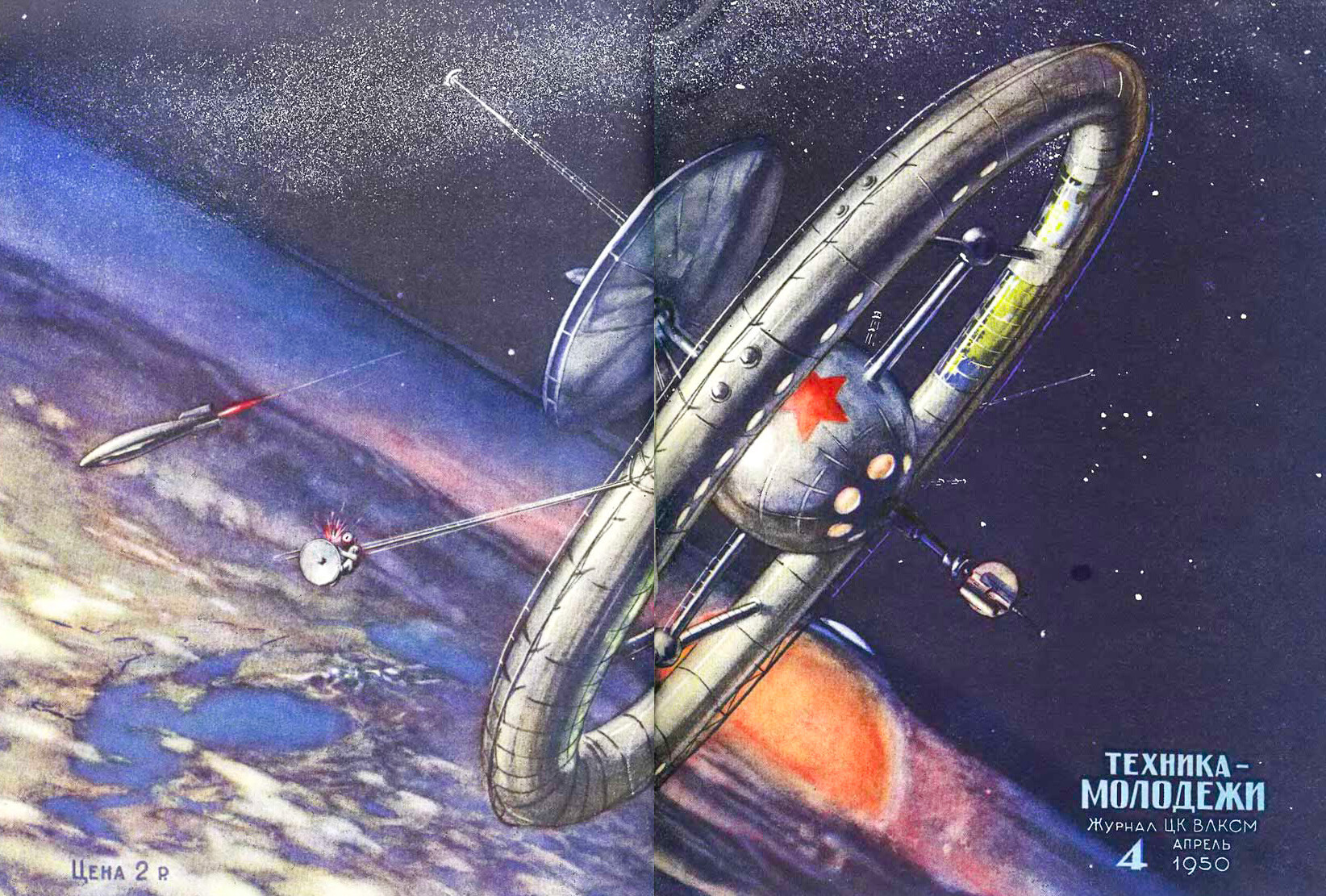Alexander Belyaev: How the pioneer of Soviet sci-fi predicted the future

In the USSR, even the science fiction genre couldn’t avoid censorship restrictions. In particular, it was not supposed to be turned into dystopia, but rather to show progress and the future in a positive way. Nevertheless, writers could let their imagination run wild, so the Soviet Union was flooded with different science fiction.
There were plenty of magazines that published many works in this genre, such as ‘Nauka i Zhizn’ (‘Science and Life’), ‘Vokrug Sveta’ (‘Around the World’), ‘Tekhnika - Molodezhi’ (‘Technology for Youth’) and ‘Znanie - Sila’ (‘Knowledge is Power’). The best artists created illustrations for them, which also became iconic. In the 1960s, such writers as the Strugatsky brothers, Kir Bulychev and others became extremely popular. They cultivated the scientific and technological achievements of the future, the space age and progress. These authors in the USSR had a whole army of fans, because they created new worlds, gave room for “internal emigration”, fantasy and escape, albeit briefly, from the harsh Soviet reality. One of the pioneers of the genre in the 1920s was Alexander Belyaev.
A boy who lived in his dreams
Since childhood, Belyaev was fond of adventure novels and he tried to turn his own life into an adventure - he built a glider and a parachute in the hope of flying, then set up experiments, also handmade and invented something. He was born in 1884 during the Russian Empire. At his priest father’s behest, he went to a theological school, but, instead of serving in church, he declared himself an atheist. In defiance of parents, he decided to become a lawyer instead. In addition, Belyaev, who loved acting from childhood, became interested in music and theater - and became performing in his native Smolensk theater, also drew scenery, self-taught himself to play the violin and took part in a circus orchestra. He also made his first steps in writing - local newspapers published his critical articles and reports.
 Belyaev as a journalist for Smolensk newspaper, 1914
Belyaev as a journalist for Smolensk newspaper, 1914
Belyaev enthusiastically welcomed the First Russian Revolution of 1905, even going to Moscow to participate in a strike and falling under the radar of the tsarist gendarmes. Graduating from a law school, he worked as a lawyer and earned good money. At the same time, his true passion remained theater and journalism.
Belyaev became a writer, due to a serious disease
It’s hard to imagine whether Belyaev would have become a great writer, rushing between the theater, the newspaper and the courts. In 1915, however, he succumbed to a serious illness - his legs were paralyzed due to spinal tuberculosis. Bedridden for more than three years (and abandoned by his young wife), he didn’t despair, but began to learn foreign languages, read avidly about new scientific and technical trends and immersed himself in the world of Jules Verne and Herbert Wells novels.
He was also fond of the “Russian Da Vinci” Konstantin Tsiolkovsky progressive space ideas. As a result, Belyaev himself took up a pen, but not as a journalist - he began to write feature stories and even poems and his first such works were published in magazines.
Passionate about self-studies, he survived the 1917 Bolshevik Revolution and the Russian Civil War (during which time his mother died of starvation). But, by 1922, Belyaev - oh miracle - felt his legs again. Learning to walk anew with the help of his latest invention - a celluloid corset - he married once more and moved to Moscow, where he practiced law. Although, the disease would not once again remind him of itself.
Science fiction
Belyaev was fascinated by photography, radio and all the new technology of the time. His imagination took him to imaginary worlds and, from the mid-1920s, he created, one after another, novels that would later become iconic.
In ‘Professor Dowell’s Head’ (1924), a scientist brings dead people’s heads to life (against their will). ‘The Amphibian Man’ (1928), about a young man who lives underwater, was adapted in the 1960s and became the most popular movie of the year. ‘KETs Star’ (1936) is about scientists successfully exploring the moon and living on Earth’s satellite for long periods of time.
 Alexander Belyaev, circa 1915
Alexander Belyaev, circa 1915
Belyaev wrote 17 novels in total and many more short stories. He described the transmission of thoughts at a distance and wireless energy, the factory for the liquefied air, the island of lost ships in the middle of the ocean. Many of Belyaev’s fantasies even predicted real scientific advances - underwater life (and photography), manned space exploration, transplantology - and even drones.
A year before his death from starvation in 1942 besieged Leningrad, Belyaev published his last novel titled ‘Ariel’, about a young man who can fly. Just like the author himself dreamed about being as a child.
Alexander Belyaev’s top novels:
1. Professor Dowell’s Head (1924)
 A still from the Soviet movie adaptation ‘Professor Dowell’s Testament’
A still from the Soviet movie adaptation ‘Professor Dowell’s Testament’
A surgeon performs a successful (and incredible) operation - he brings his late Professor Dowell’s head back to life. The surgeon begins to take advantage of the professor’s great intelligence and, with his help, in strict secrecy, performs more and more such operations. The surgeon’s assistant meets Dowell’s son and together they try to expose the villain surgeon, who conducted experiments on people against their will. Having survived paralysis, Belyaev in this novel wanted to convey “what a head without a body can experience”.
2. The Ruler of the World (1926)
 'The Ruler of the World ' cover
'The Ruler of the World ' cover
To earn a living, the young German scientist is forced to work as a secretary for a banker. In his spare time, he conducts experiments and even creates an apparatus that, like radio waves, allows to transmit thoughts at a distance (a matter that greatly interested Belyaev). Accidentally, he gets married to an heiress of his banker’s gigantic fortune. He begins to secretly act on her behalf and manage her money. And then, in order to avoid prosecution, he conducts mass sessions of thought transmission - and thus makes a whole neighborhood of Berlin turn to panic, then euphoria…
3. The Amphibian Man (1928)
 A still from the Soviet cult movie, ‘The Amphibian Man’
A still from the Soviet cult movie, ‘The Amphibian Man’
A young man named Ichthyander (“Fish Man” from Ancient Greek) had very weak lungs as a child and, in order for him to survive, a surgeon transplanted shark gills into him. Since then, Ichthyander is able to live underwater. However, he cannot not exist peacefully - the sailors who have noticed him decide to catch the “sea devil” and use him for their malicious purposes. Meanwhile, the amphibian man falls in love with the ordinary girl he saved from the sea. By the way, Belyaev, in some way, predicted the future - his Ichthyander swims in a thin skinny suit, flippers, gloves and glasses with thick lenses. Modern diving suits, made of neoprene and resembling a second skin, first appeared in the U.S. only in the 1950s.
4. KETs Star (1936)

One of the first Soviet novels about space is devoted to cosmic scientist Konstantin Tsiolkovsky, whom Belyaev admired (and his initials that are encoded in the title KETs). Quite by chance, young Leningrad scientist Artemyev discovers that in the distant Pamir Mountains there is a place from where people are launched into space in rockets. In addition, it turns out that the Earth has artificial satellites, where scientists live and work. Artemyev also manages to fly to the Moon, where he finds signs of life.


